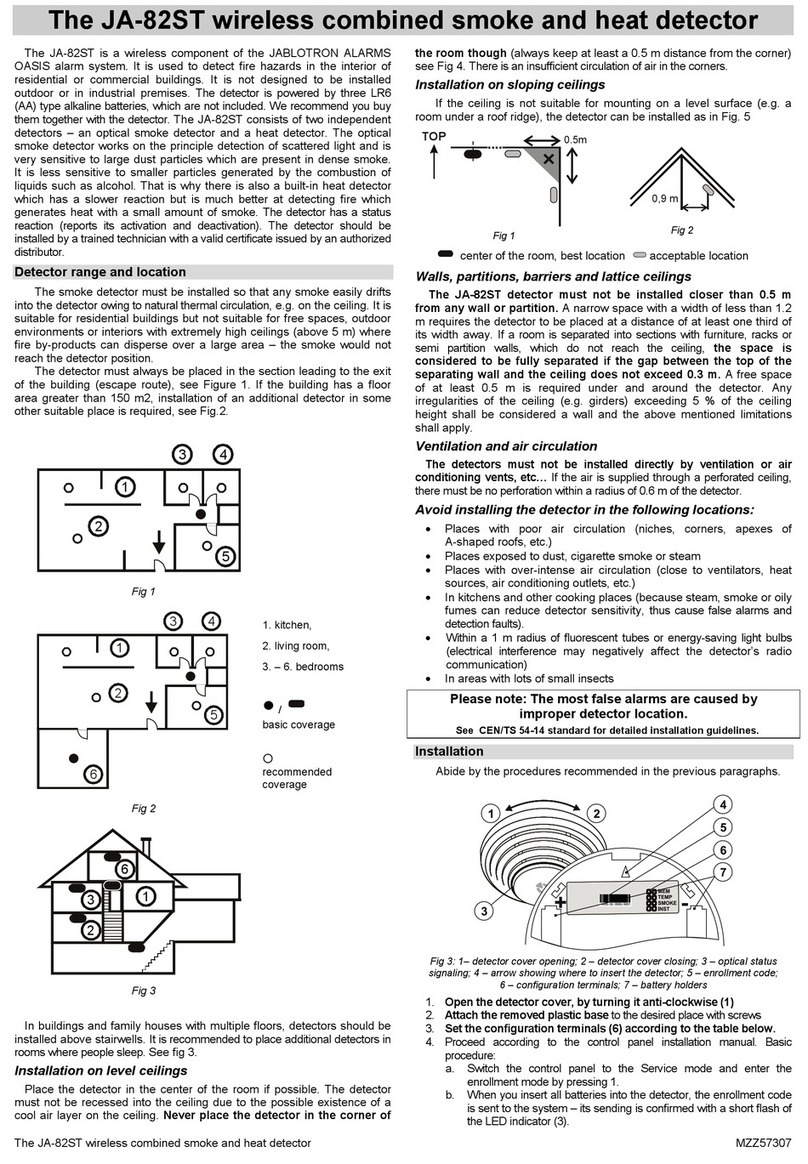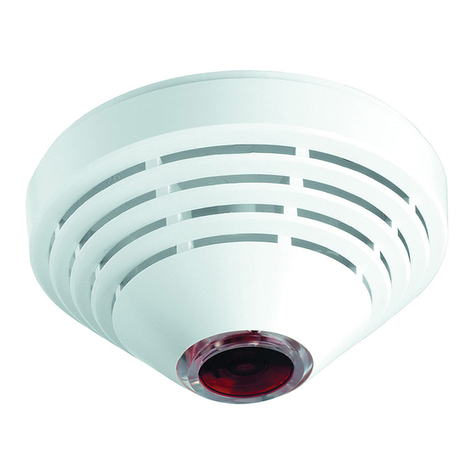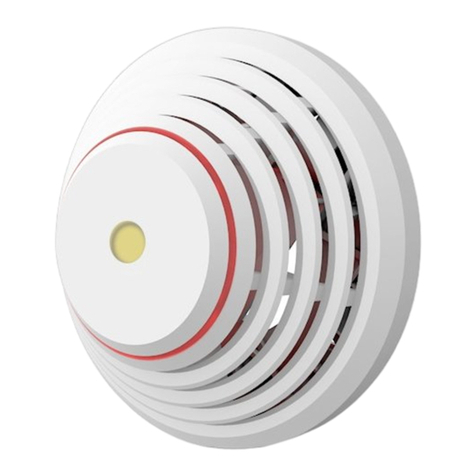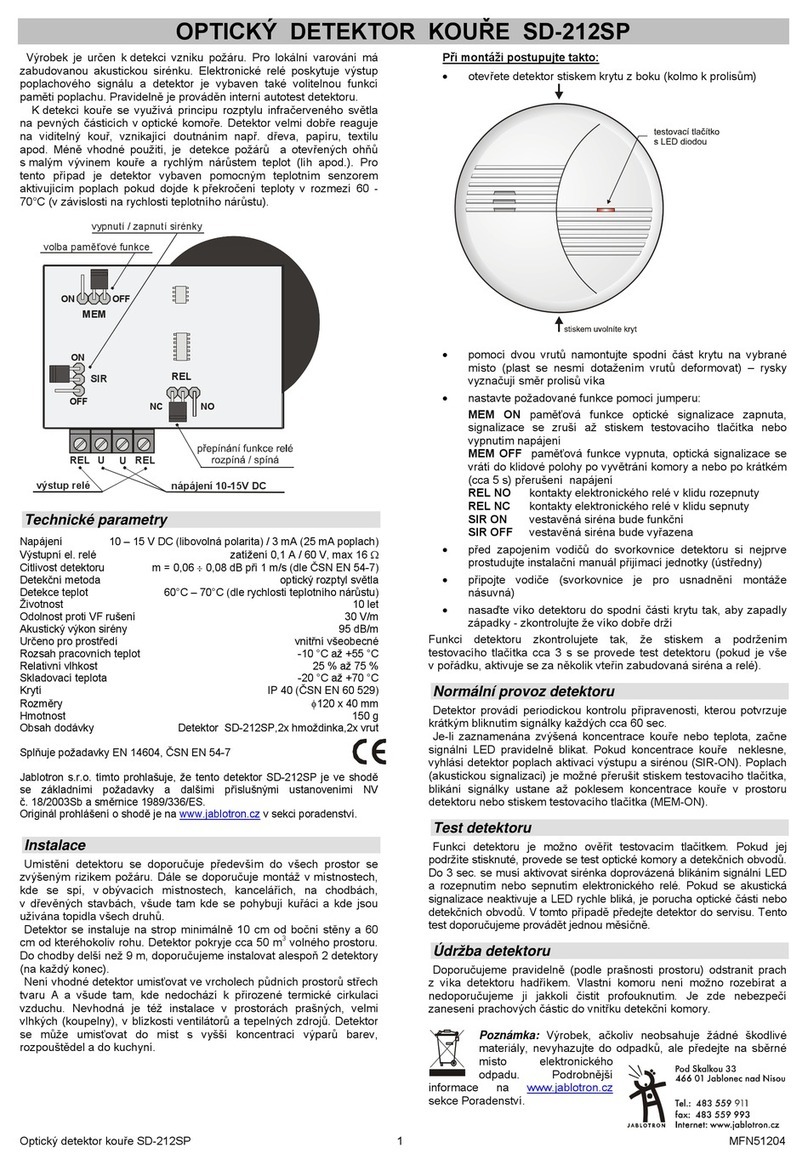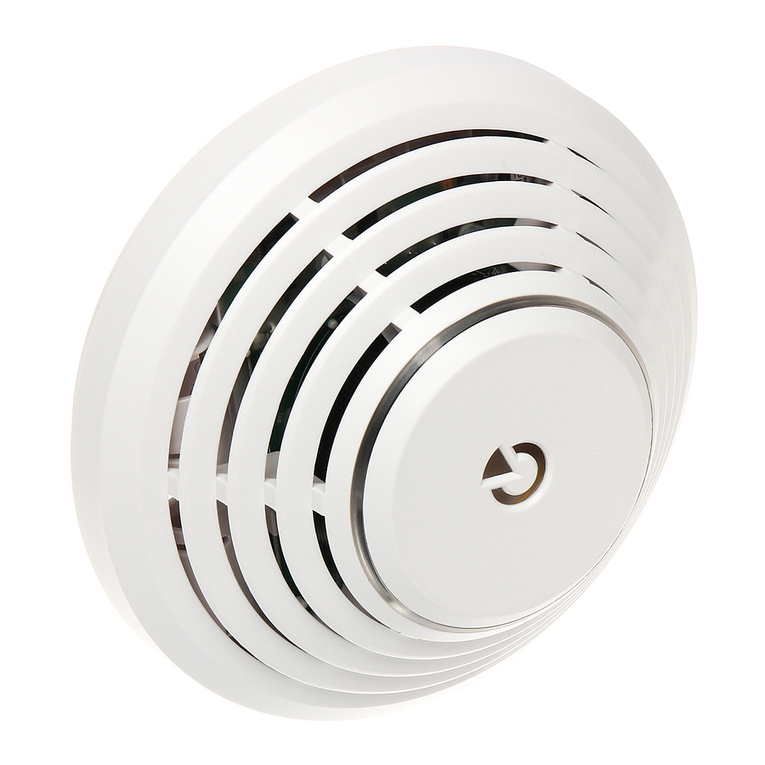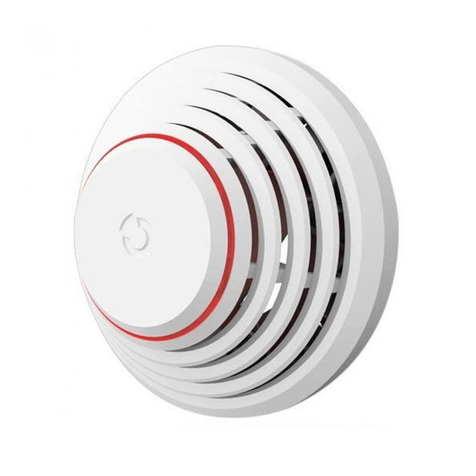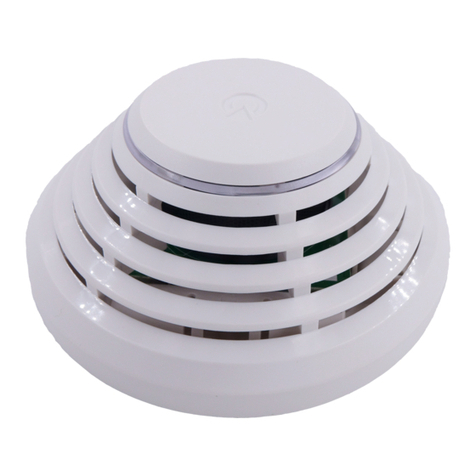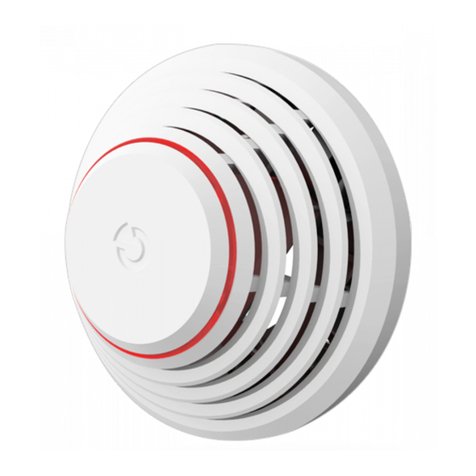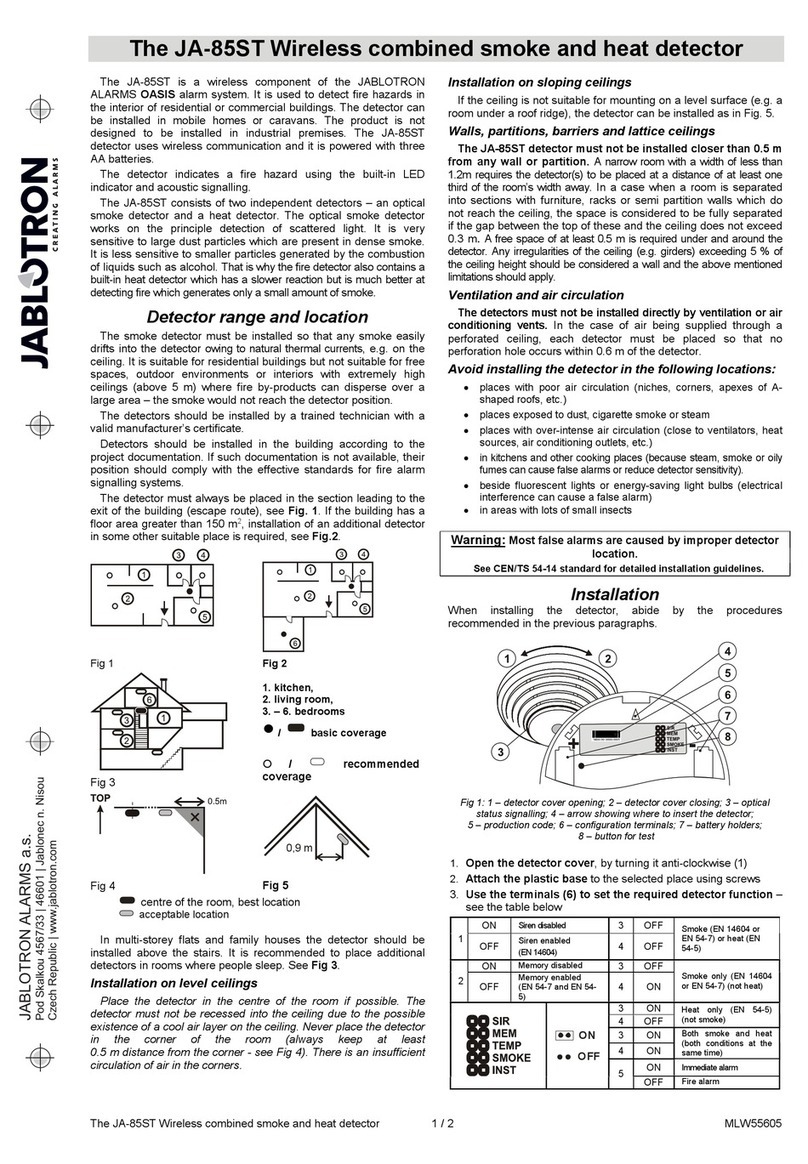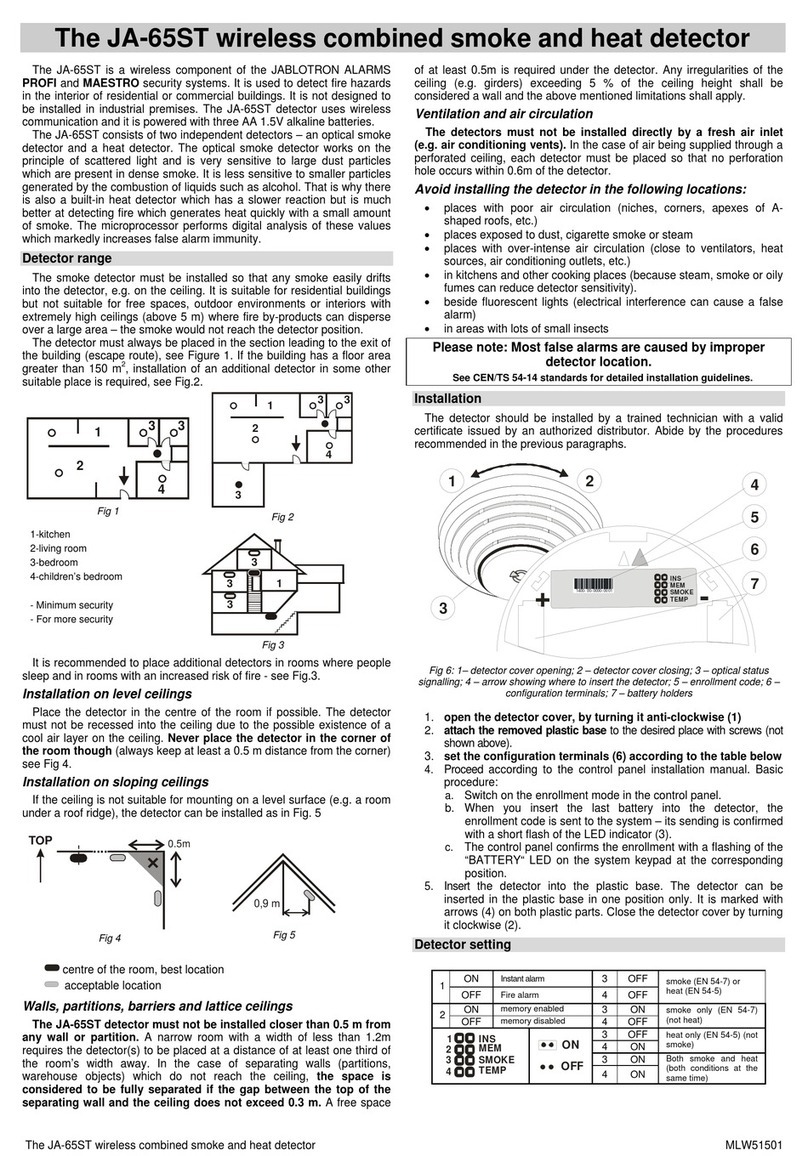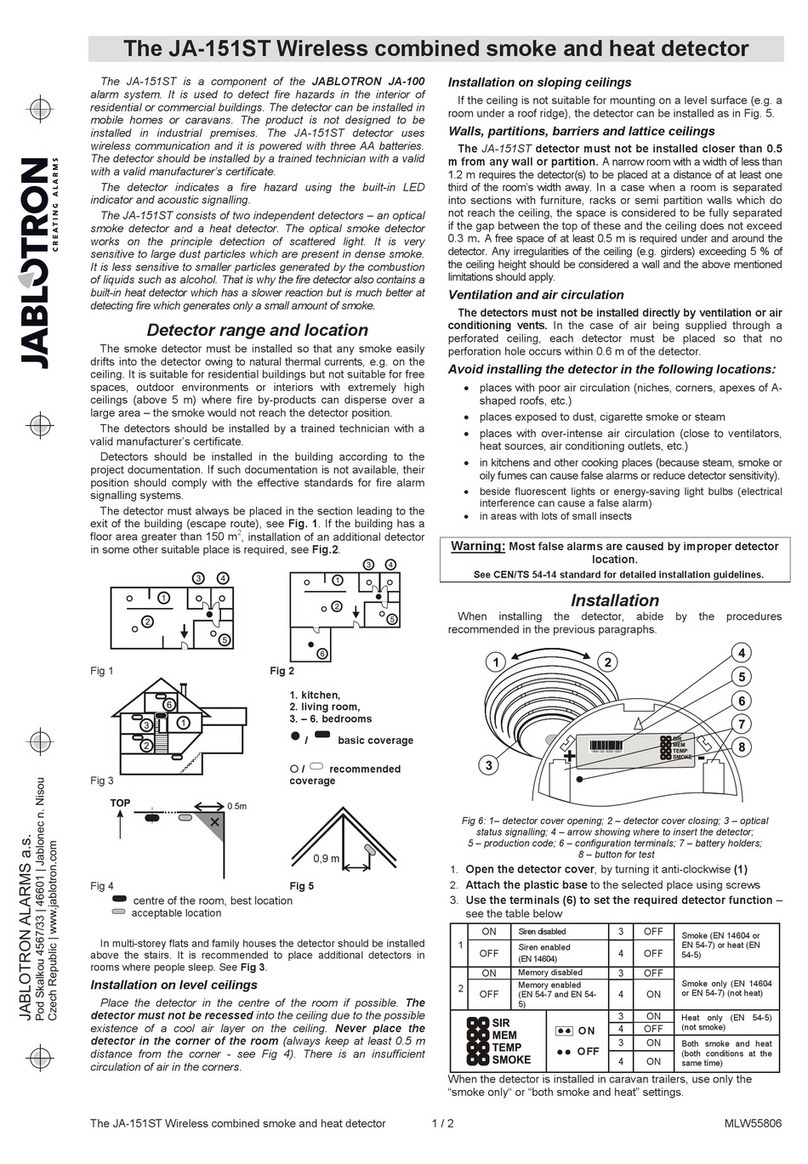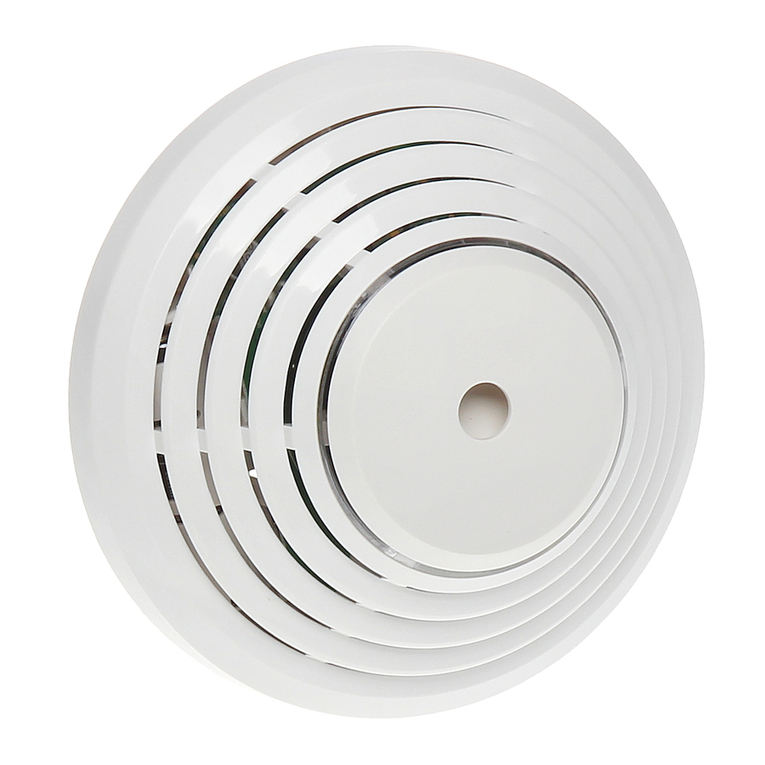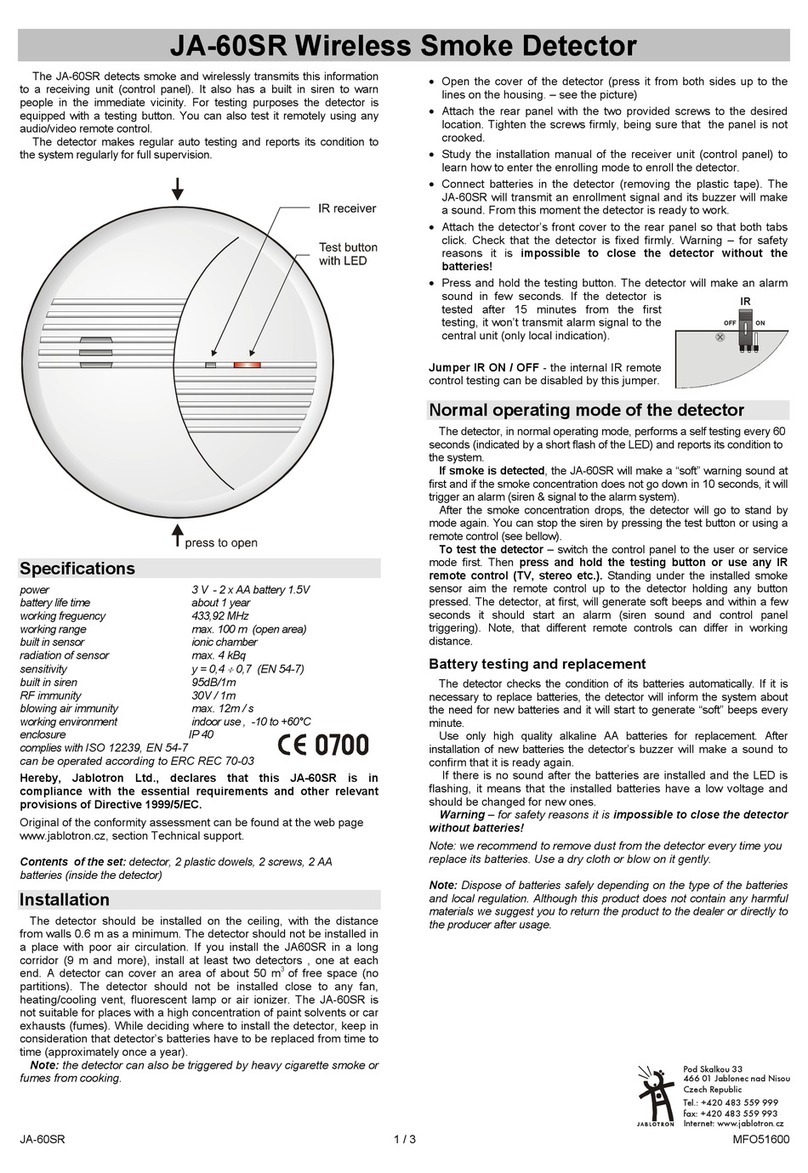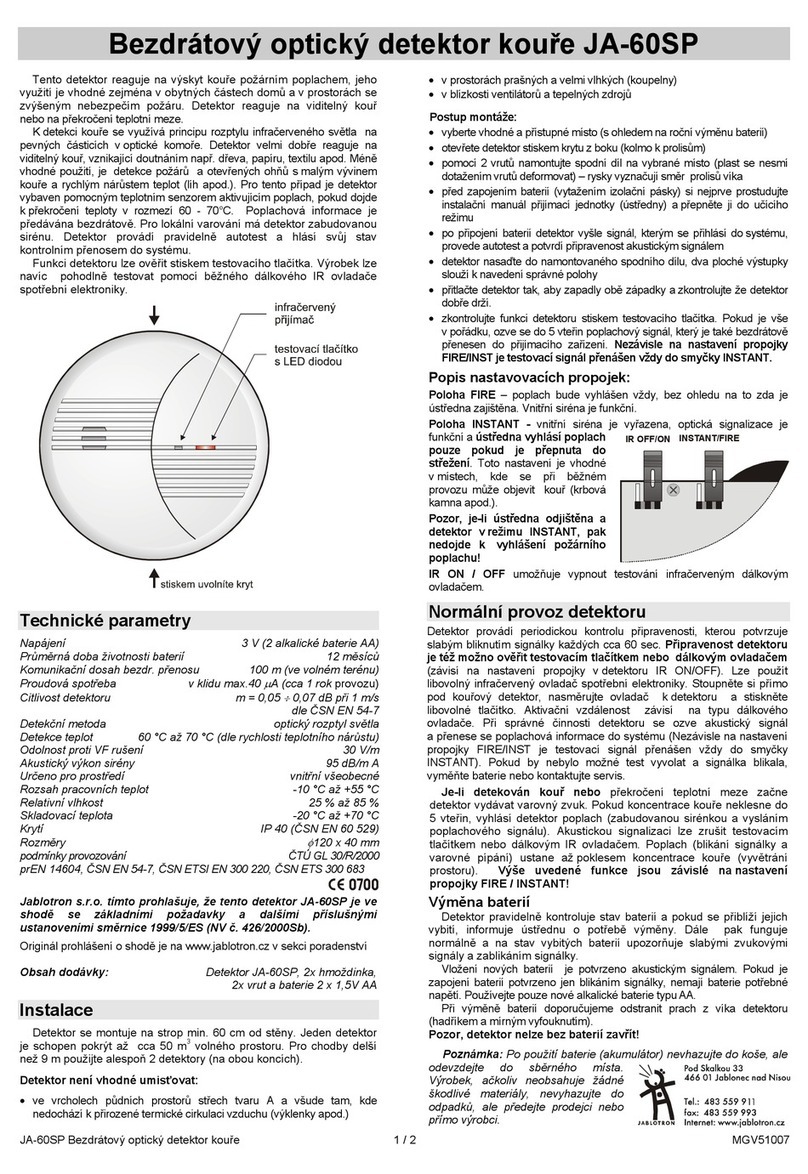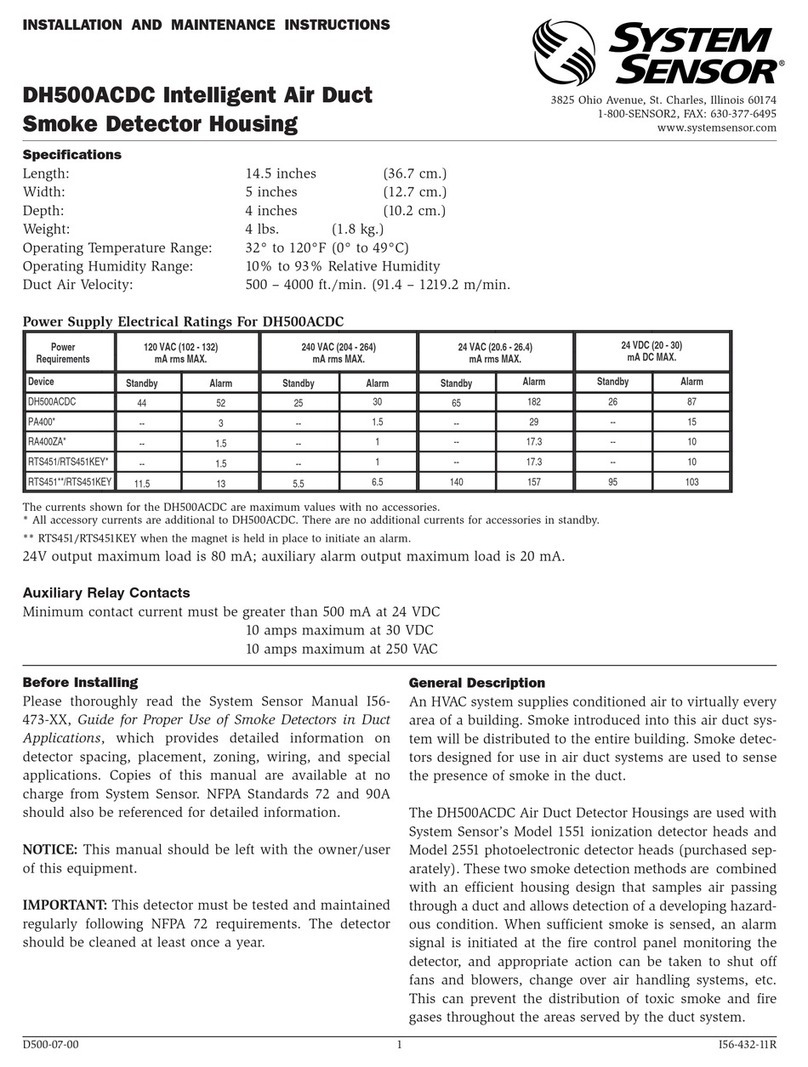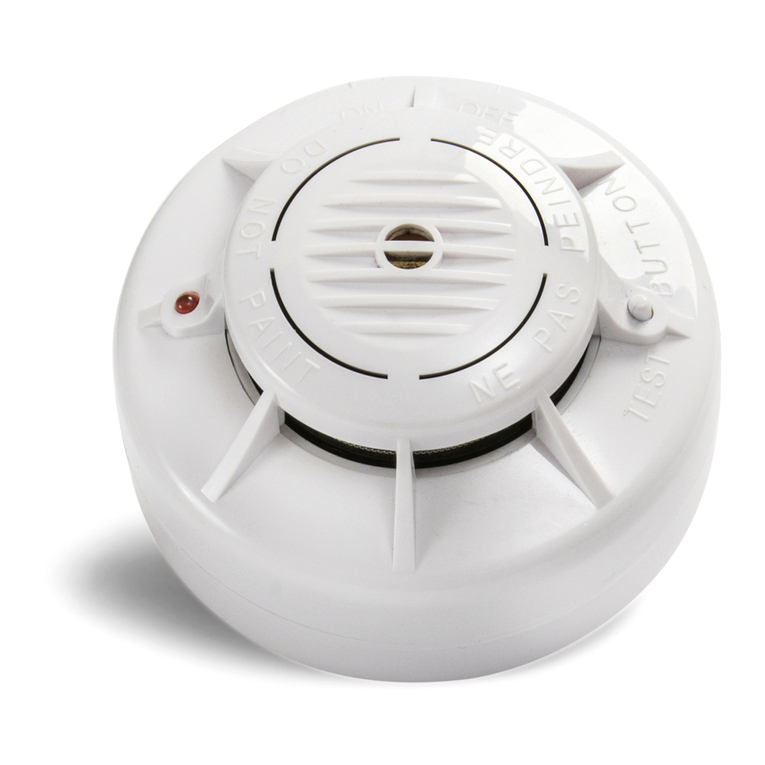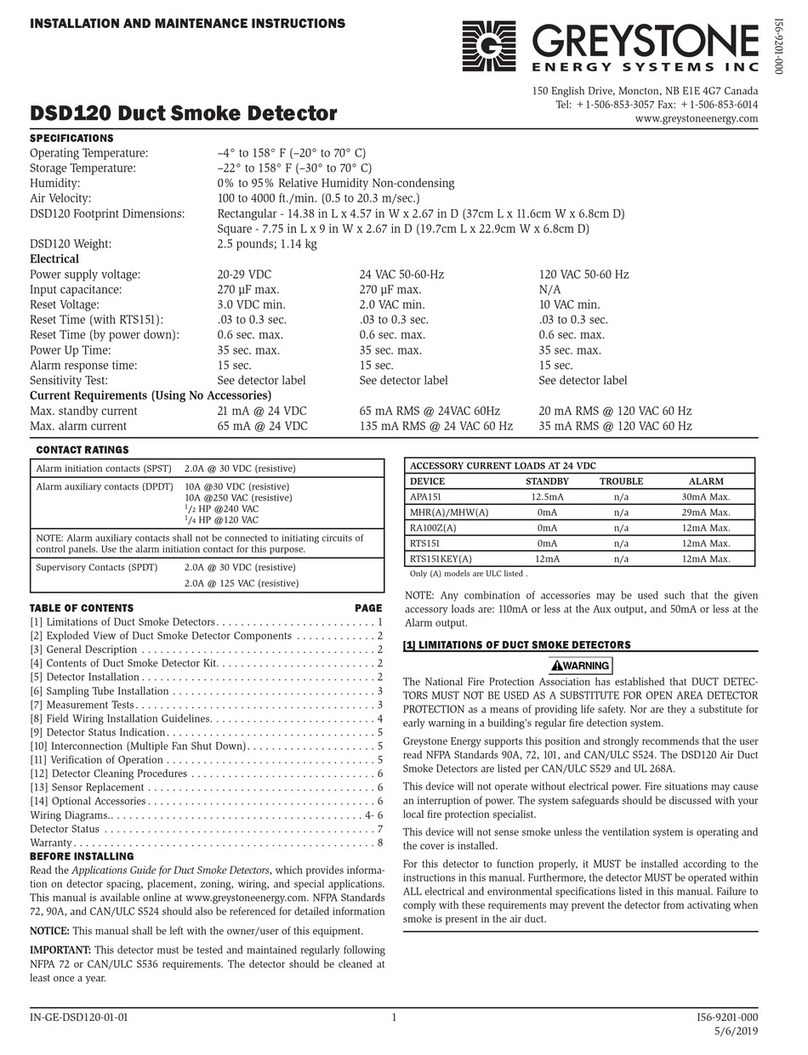The SD-728 stand-alone smoke detector 2 / 2 MZZ55000
applicable. However, any irregularity (including beams) exceeding 5% of the ceiling
height is considered to be awall with the consequences stated above.
•Ventilation and air circulation
The detectors must not be installed directly by a fresh air inlet, e.g. air
conditioning vents. In the case of air being supplied through a perforated ceiling,
each detector must be placed so that no perforation hole occurs within 0.6m of the
detector.
•Avoid installing the detector in the following locations:
•Places with poor air circulation (niches, corners, apexes of A-shaped roofs).
•Places exposed to dust, cigarette smoke or steam.
•Places with over-intense air circulation (close to ventilators, heat sources or air
conditioning outlets).
•Kitchens and other cooking places (because steam, smoke or oily fumes can
reduce detector sensitivity).
•Beside lights (electrical interference can cause a false alarm)
•Areas with lots of small insects
Caution: Most false alarms are caused by improper detector location.
See CEN/TS 54-14 standards for detailed installation guidelines.
Installing the detector
1. Detach the mounting bracket from the detector by turning the mounting bracket
anti-clockwise.
2. Hold the bracket on the ceiling so that it does not move during hole-marking.
3. Mark the intended location of mounting holes on the ceiling.
4. Drill the holes and insert some dowels.
5. Screw the bracket onto the ceiling thru the screw slots.
6. Open the battery cover and connect the battery to the contacts in the detector,
ensure the polarity is correct.
7. Insert the battery and close the battery cover.
8. Push and twist the detector clockwise onto the bracket on the ceiling.
Warning: The detector cannot be twisted onto the mounting bracket
without a battery being in the detector (mechanical interlock).
Detector functions
Correct functioning: Indicated by a flash of its LED approximately every 45
seconds.
Fire alarm: Penetration of smoke into the detector after a certain period of time is
indicated by its LED blinking rapidly. If smoke persists, the built-in alarm siren
sounds (intermittent tone).
End of fire alarm: An alarm lasts until the smoke disappears and can not be
interrupted.
Testing the detector
The functionality of the detector can be verified by pressing and holding the test
button. The detector light flickers and the siren sounds within about 20 seconds.
This test should be carried out at least 1x per week. If the test button has no effect,
have the detector serviced.
Warning: Never start a fire in a building to test the detector. Instead, use smoke-
simulating aerosols for realistic testing.
Replacing the battery
Perform battery replacement 1x per year, or earlier if the detector makes a low
battery beep at regular one minute intervals. The detector should be able to work
with a weak battery for up to 14 days. Use only good-quality alkaline batteries.
When replacing the battery, we recommend you to use a vacuum cleaner to
remove any dust inside the detector. Dispose of batteries according to local
regulations.
Technical Specifications
Power alkaline battery 9 Vtype 1604G (6LR61), 600mAh
Typical battery lifetime approx. 1 year
Smoke sensor optical, light scattering
Sensitivity m = 0.11 - 0.13 dB/m (EN 14 604)
Siren acoustic output min. 85dB/3m A
Operating temperature range +4 to +38 °C
Dimensions Diameter 103 mm, height 40 mm
Conformity EN 14 604, EN 50130-4, EN 55022
0786-CPD-20405
JABLOTRON ALARMS a.s. hereby declares that the SD-728 is in compliance with the
essential requirements and other relevant provisions of Directive 1999/5/EC. The original
of the conformity assessment can be found at www.jablotron.com, Technical Support
section.
Note: Although this product does not contain any harmful materials we
suggest you return the product to the dealer or directly to the producer
after use.
